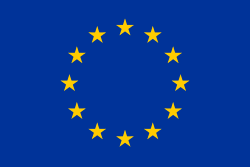Top Qs
Timeline
Chat
Perspective
Markets in Crypto-Assets
EU regulation on crypto assets From Wikipedia, the free encyclopedia
Remove ads
Markets in Crypto-Assets (MiCA or MiCAR) is a regulation in European Union (EU) law. It is intended to help streamline the adoption of blockchain and distributed ledger technology (DLT) as part of virtual asset regulation in the EU, while protecting users and investors.
MiCA was adopted by the EU Parliament on 20 April 2023 and has been fully applicable since December 2024.[1][2]
Remove ads
Title
The full name of the law is "Regulation (EU) 2023/1114 of the European Parliament and of the Council of 31 May 2023 on markets in crypto-assets, and amending Regulations (EU) No 1093/2010 and (EU) No 1095/2010 and Directives 2013/36/EU and (EU) 2019/1937".[3]
The regulation is unofficially called "Markets in Crypto-Assets" (MiCA) or "Markets in Crypto-Assets Regulation" (MiCAR) for short.
MiCA is part of a digital finance package that intends to transform the European economy.[4]
Remove ads
Function
Summarize
Perspective
MiCA provides legal certainty around crypto assets – cryptocurrencies, security tokens and stablecoins. It is similar to the EU’s Markets in Financial Instruments Directive (MiFID), which is a legal framework for securities markets, investment intermediaries and trading venues.[5] MiCA covers participants in the crypto-market, including crypto-asset issuers, trading platforms, exchanges, and custodian wallet providers. A benefit of the MiCA proposal is that it permits banks, investment firms, and other financial institutions to engage in crypto-market activities, provided they have authorization under MiFID II to offer services.[6] It was expected to be different from the UK's crypto regulatory framework. The UK was expected to start by regulating only a few crypto assets, while the MiCA regime was expected to be broader.[7][8]
MiCA introduced in two phases, established a harmonized regulatory framework for crypto-assets across all EU member states, including passporting rights for crypto-asset service providers. The first phase, effective from 30 June 2024, regulates the authorization and supervision of asset-referenced tokens (ART) and e-money tokens (EMT), while the second phase, effective from 30 December 2024, covers other crypto-assets and crypto-asset service providers (CASPs). Additionally, second-level legislation, including rules on own funds, qualified holding requirements, stress testing, and remuneration policies for issuers of ART and EMT, has been drafted by European Securities and Markets Authority and issued by the European Commission.[9]
Remove ads
History
Summarize
Perspective
Groundwork for MiCA started in 2018 following public interest in cryptocurrencies (by 2024 there were estimated to be 31 million crypto users in Europe[10]). The European Commission adopted a digital finance package, which included MiCA, in September 2020, leading to discussions among the preparatory bodies (the EU Council, the European Central Bank, the Economic and Social Committee).[11]
After 18 months of debate, the EU passed MiCA in 2022.[12] Regulations on stablecoins took effect in June 2024[13] and those affecting crypto asset service providers take effect in December, 2024.[14] However, service providers with fewer than 15 million active users in Europe would not be considered “significant” under MiCA and so would be supervised by national EU authorities rather than the European Banking Authority and the European Central Bank. Elizabeth McCaul, a member of the ECB Supervisory Board, warned of “gaps in the framework” for regulating crypto markets and that traditional approaches might not work. She said that the 15m threshold would probably exclude Binance, and FTX before its collapse.[15] She had made similar warnings at a Financial Times conference in November 2022.[16]
Société Générale was the first big bank to list a stablecoin under MiCA, in December 2023, on Bitstamp, an exchange based in Luxembourg.[17]
In May 2024, the EBA published final draft regulatory technical standards (RTS) and final draft implementing technical standards (ITS) under MiCA, applicable from 30 June 2024.
See also
External links
References
Wikiwand - on
Seamless Wikipedia browsing. On steroids.
Remove ads

